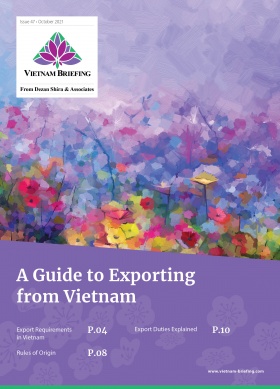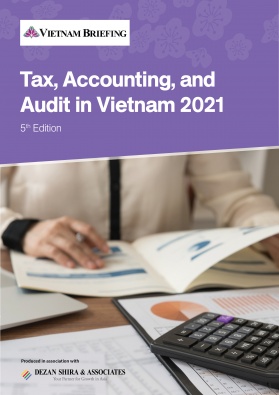Vietnam Issues VAT Rate Reduction for Imported Medical Equipment: Circular 43
- Vietnam issued Circular 43 implementing a reduction in VAT rates for medical equipment.
- The VAT rates were reduced to five percent and took effect in August 2021.
- Vietnam Briefing looks into the process and which businesses are eligible.
Vietnam recently issued Circular No. 43/2021/TT-BTC (Circular 43) implementing a reduction in the value-added tax (VAT) rate for imported medical equipment to 5 percent from 10 percent. Circular 43 came into force on August 1, 2021.
Accordingly, businesses can apply for the five percent rate if they have one of the following documents:
- Import license;
- Certificate of registration for circulation; or
- The document certifies the eligibility for circulating the medical equipment.
The medical equipment and tools eligible for the new VAT rate include:
- Scanning, imaging, and screening equipment;
- Specialized equipment for surgery;
- Blood transfusion instruments;
- Emergency medical service vehicles;
- Measuring instruments for measuring blood pressure, cardiac activities, pulse;
- Syringes;
- Vaccines; and
- Chemicals for experimentation and sterilization, among many others.
The new rules have been welcomed by businesses as they are clearer and also address constant changes in the types of medical equipment that is subject to VAT rates.
Opportunities for foreign suppliers
The new VAT rate can be advantageous for foreign suppliers, especially as 90 percent of medical devices in Vietnam are imported since the majority of local manufacturers cannot meet local demand, only able to produce lower value equipment such as disposable supplies and hospital beds. However, there is an increasing number of startups developing digital medicine solutions.
Much of Vietnam’s existing medical equipment needs are obsolete and many hospitals lack sufficient equipment for intensive care units and surgery. However, Vietnam’s continued economic development and growth of the middle-class (set to account for 26 percent of the country’s population by 2026) have led to increasing demand for high-quality healthcare. These developments offer market opportunities for foreign medical device suppliers.
Most imports come from Japan, Germany, the US, China, and Singapore, totaling over US$500 million in 2019. The medical device market was valued at US$1.4 billion in 2019, making Vietnam the ninth largest medical device market in the Asia-Pacific region. This sector is forecast to grow at an average rate of 10 percent per year over the next five years.
Some 90 percent of medical device imports comprise diagnostic imaging equipment (magnetic resonance imaging, X-ray, and ultrasounds), and equipment used for surgery, and emergency resuscitation testing equipment. Other areas of growth include emergency equipment, monitoring equipment, and orthopedics equipment.
The largest purchaser of medical devices is local government hospitals, accounting for 84 percent of the market. Local private hospitals and research and educational institutions are showing the strongest demand, while foreign-owned hospitals are also large purchasers but usually receive their supplies from their sponsoring country. The government is also pushing to increase funding to upgrade hospitals throughout the provinces and healthcare expenditure per capita is expected to grow 9.2 percent per year, reaching US$262 by 2025 (US$26 billion for the country).
Leveraging free trade agreements
Foreign investors can also take advantage of Vietnam’s various free trade agreements such as through the EU-Vietnam free trade agreement (EVFTA), the UK-Vietnam FTA (UKVFTA), and the Regional Comprehensive Economic Partnership (RCEP). Additionally, due to its membership in the Association of Southeast Asian Nations (ASEAN), Vietnam has become a signatory to several FTAs that the regional trade bloc has signed.
About Us
Vietnam Briefing is produced by Dezan Shira & Associates. The firm assists foreign investors throughout Asia from offices across the world, including in Hanoi, Ho Chi Minh City, and Da Nang. Readers may write to vietnam@dezshira.com for more support on doing business in Vietnam.
We also maintain offices or have alliance partners assisting foreign investors in Indonesia, India, Singapore, The Philippines, Malaysia, Thailand, Italy, Germany, and the United States, in addition to practices in Bangladesh and Russia.
- Previous Article Vietnams Wirtschaft erholt sich: Warum Anleger positiv denken sollten
- Next Article COP26 and Climate Change: Vietnam’s Commitment to Reducing Emissions







